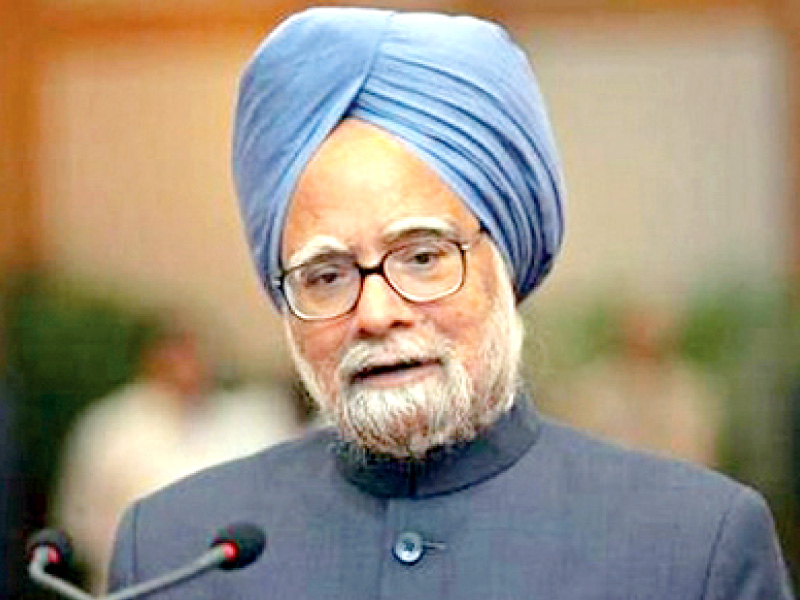
The diplomat revealed that former Indian Prime Minister Manmohan Singh and Musharraf had worked out a draft framework agreement on Indian-held Kashmir in secret talks, Indian Express reported.
Files containing unsigned documents exchanged by the two sides were personally handed over to Modi by his predecessor at a May 27, 2014 meeting, the diplomat said.
The revelation came as former Pakistani foreign minister Khurshid Kasuri is set to release the Indian edition of his book, ‘Neither a hawk nor a dove’, the first account of the Indian-Pakistan secret diplomacy on Kashmir by someone who was privy to the negotiations.
Read: Mumbai attacks aftermath: ‘India planned airstrikes in Pakistan after 26/11’
In his book, Kasuri quotes Musharraf as stating that the secret Kashmir agreement envisaged joint management of the state by India and Pakistan, as well as demilitarisation of the territory.
The Indian diplomat further disclosed that the final draft of the framework agreement in fact spoke of a “consultative mechanism”, made up of elected representatives of the governments of Jammu and Kashmir and Azad Kashmir, as well as officials of the two national governments. The consultative mechanism, he added, was mandated to address regional social and economic issues, like tourism, religious pilgrimages, culture and trade.
However, the official said that India had rejected Musharraf’s push for institutions for joint management of Kashmir by the two states, arguing it would erode Indian sovereignty.
Read: Neither Hawk nor Dove: ‘Modi will be unable to maintain hawkish stance’
Indian ambassador Satinder Lambah and Musharraf’s interlocutors, Riaz Muhammad Khan and Tariq Aziz, had spent over 200 hours during 30 meetings held in Dubai and Kathmandu discussing the draft agreement.
A former intelligence official revealed that Lambah was flown to Rawalpindi on a Research and Analysis Wing jet when negotiations reached an advanced stage, travelling without a passport or visa to ensure the meetings remained secret.
“In early talks, Pakistan reiterated its public positions, calling for international monitoring of the Line of Control, and so on. However, it became clear that both Musharraf and Prime Minister Singh were keen on arriving at an agreement that would allow them to focus on their respective agendas, without conflict over Kashmir sapping their energies,” the Indian diplomat said.
“Each paper exchanged between the two sides,” the diplomat said, “was read by him personally, and his instructions were then given to Lambah. There were just two people in the Cabinet, and perhaps three more in the bureaucracy, who were privy to what was going on.”
Later, Prime Minister Singh’s interlocutor on Kashmir, now Governor NN Vohra, was also given the task of briefing secessionist leaders in the state about the deal.
According to a former aide involved in the talks, Singh was on the verge of starting consultations with his cabinet and opposition leaders on the deal, when anti-Musharraf protests were started by Pakistani lawyers in March 2007.
“He seemed confident the talks would soon be able to revive,” the aide said, “but ended up being swept out of office”.
Read: UNGA speech: Nawaz proposes 4-point peace initiative with India
“At one time, it appeared that an important breakthrough was in sight. Events in Pakistan — for example, the fact that General Musharraf had to make way for a different setup — I think that led to the process not moving further,” PM Singh admitted at a press conference in 2014.
The two sides had also agreed to treat the Line of Control “like an international border”, with agreements to allow for the free movement of goods and people, the Indian negotiator revealed. Another important aspect of the agreement was that it would not require ratification by parliament or a constitutional amendment.
Read: Give up terrorism and let’s talk, India to Pakistan at UN
Lambah declined to be interviewed, but the official said the language of speech he delivered at Kashmir University in 2014 “was near-identical to that used in the final draft”.
This article originally appeared on The Indian Express












































COMMENTS (6)
Comments are moderated and generally will be posted if they are on-topic and not abusive.
For more information, please see our Comments FAQ